marp: true theme: default paginate: true _paginate: false header: '' footer: '' backgroundColor: white
第十一讲 线程与协程
第二节 协程(Coroutine)
向勇 陈渝 李国良 任炬
2025年秋季
问题
- 堆栈必须是CPU调度对象的属性吗?
- 困惑:堆栈是内存资源,但却是CPU调度对象的属性
- 有可能把堆栈从CPU调度对象中去除吗?
提纲
1. 协程的概念
- 协程的实现
- 协程示例
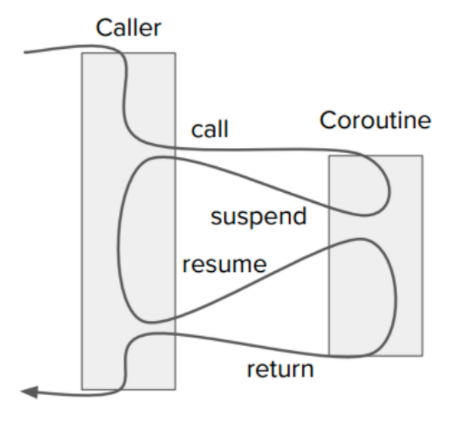
线程存在的不足
- 大规模并发I/O操作场景
- 大量线程占内存总量大
- 管理线程程开销大
- 创建/删除/切换
- 访问共享数据易错

协程(coroutine)的提出
协程由Melvin Conway在1963年提出并实现(Ref)
- 作者对协程的描述是“行为与主程序相似的子例程(subroutine)”
- 协程采用同步编程方式支持大规模并发I/O异步操作
Donald Knuth :子例程是协程的特例
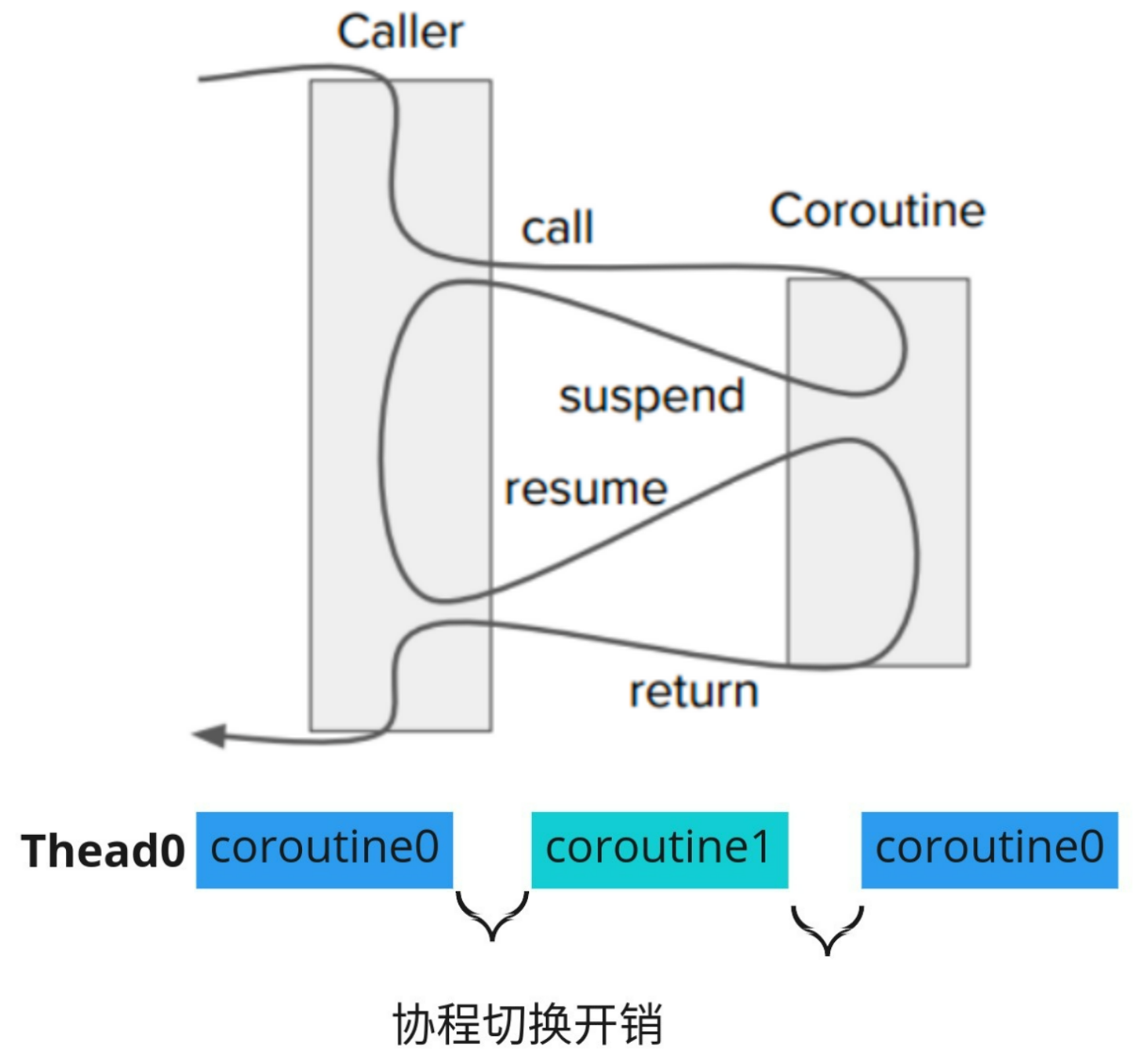
协程(Stackless Coroutine)的定义
本课程中的协程限指无栈协程。
- 协程是一种通过状态机来管理执行流上下文,以支持在指定位置挂起和恢复执行流的轻量级并发编程结构。
协程的核心思想:控制流的主动让出与恢复

协程(异步函数)与函数(同步函数)
- 相比普通函数,协程的函数体可以挂起并在任意时刻恢复执行
- 无栈协程是普通函数的泛化

协程与用户线程的比较
- 协程的内存占用比线程小
- 线程数量越多,协程的性能优势越明显
- 不需要多线程的锁机制,不存在同时写变量冲突,在协程中控制共享资源不加锁,只需要判断状态,所以执行效率比多线程高很多。
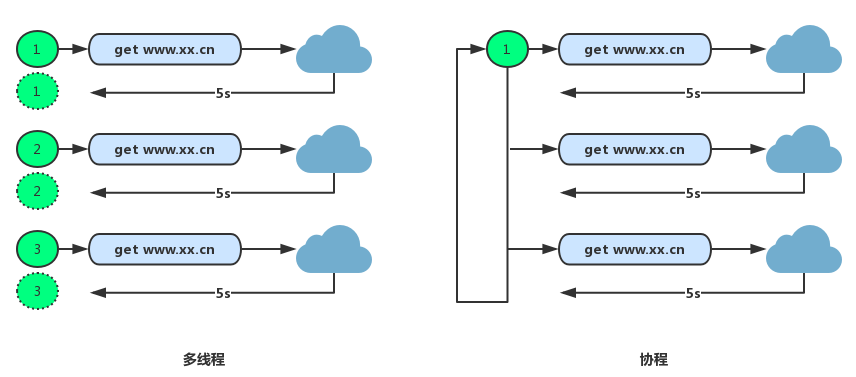
协程示例(python)
def func()://普通函数
print("a")
print("b")
print("c")
def func()://协程函数
print("a")
yield
print("b")
yield
print("c")
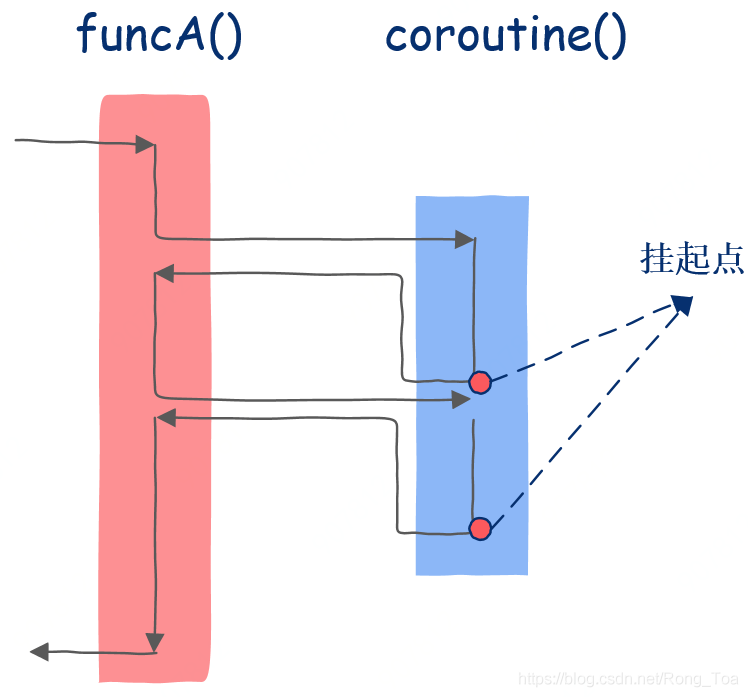
提纲
- 协程的概念
2. 协程的实现
- 协程示例

协程的实现方式
2004年Lua的作者Ana Lucia de Moura和Roberto Ierusalimschy发表论文“Revisiting Coroutines”,提出依照三个因素来对协程进行分类:
- 控制传递(Control-transfer)机制
- 栈式(Stackful)构造
- 编程语言中第一类(First-class)对象
基于控制传递的协程
控制传递机制:对称(Symmetric) v.s. 非对称(Asymmetric)协程
- 对称协程:控制流是双向的,没有固定的主-从关系
- 只提供一种传递操作,用于在协程间直接传递控制
- 对称协程都是平等的,控制权直接在对称协程之间进行传递
- 对称协程在挂起时主动指明另外一个对称协程来接收控制权
- 非对称协程(半对称(Semi-symmetric)协程):主-从协程
- 提供调用和挂起两种操作,非对称协程挂起时将控制返回给调用者
- 调用者或上层管理者根据某调度策略调用其他非对称协程
对称协程的控制传递:每个协程可直接转移到其他任何一个协程
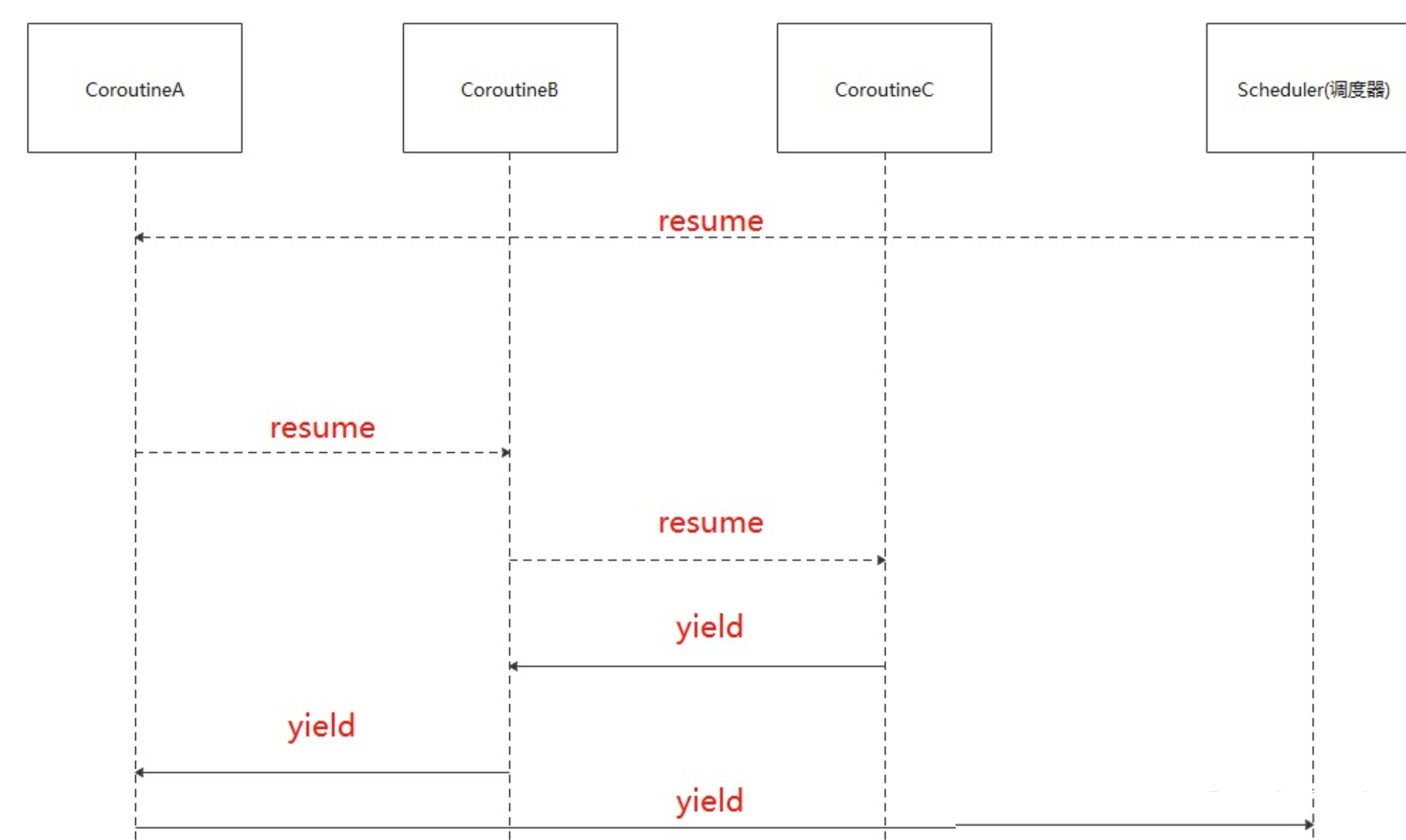
非对称协程的控制传递:只能将控制权“yield”回给启动它的协程
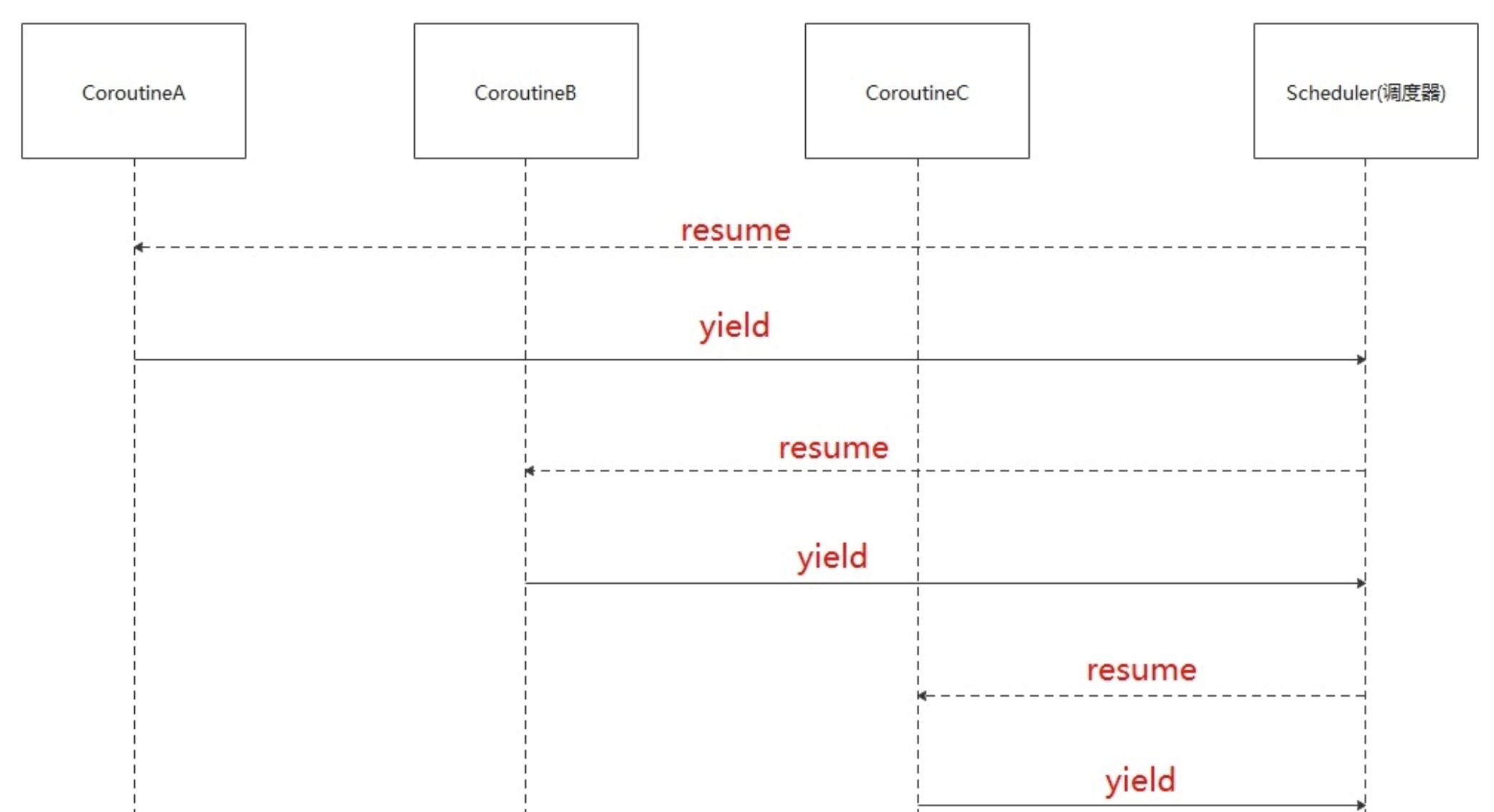
对称协程
对称协程是指所有协程都是对等的,每个协程可以主动挂起自己,并让出处理器给其他协程执行。对称协程不需要操作系统内核的支持,可以在用户空间中实现,具有更快的上下文切换速度和更小的内存开销。
- 优点:简单易用,没有复杂的调度逻辑。
- 缺点:如果某个协程死循环或阻塞,会导致整个进程挂起。
非对称协程
非对称协程是指协程和线程一起使用,协程作为线程的子任务来执行。只有线程可以主动挂起自己,而协程则由线程控制其执行状态。
- 优点:
- 支持并发执行,可以通过多线程实现更高的并发性。
- 协程之间不会相互阻塞,可处理一些长时间任务。
- 缺点:
- 实现较为复杂。
- 需要通过锁等机制来保证协程之间的同步和互斥。
有栈(stackful)协程和无栈(stackless)协程
- 无栈协程:指可挂起/恢复的函数
- 无独立的上下文空间(栈),数据保存在堆上
- 开销: 函数调用的开销
- 有栈协程:用户态管理并运行的线程
- 有独立的上下文空间(栈)
- 开销:用户态切换线程的开销
基于第一类语言对象的协程
第一类(First-class)语言对象:First-class对象 v.s. second-class对象 (是否可以作为参数传递)
- First-class对象 : 协程被在语言中作为first-class对象
- 可作为参数被传递,由函数创建并返回,并存储在一个数据结构中供后续操作
- 提供了良好的编程表达力,方便开发者对协程进行操作
- 受限协程
- 特定用途而实现的协程,协程对象限制在指定的代码结构中
第一类(First-class)语言对象
- 可被赋值给一个变量
- 可嵌入到数据结构中
- 可作为参数传递给函数
- 可作为值被函数返回
第一类(First-class)语言对象
- First-class 对象优势:
- 可作为函数参数传递,使得代码更加灵活
- 可作为函数返回值返回,方便编写高阶函数
- 可被赋值给变量或存储在数据结构中,方便编写复杂的数据结构
- First-class 对象劣势:
- 可能会增加程序的开销和复杂度。
- 可能存在安全性问题,例如对象被篡改等。
- 可能会导致内存泄漏和性能问题。
第二类(Second-class)语言对象:不能将其作为参数传递
- Second-class 对象优势:
- 可以通过类型系统来保证程序的正确性
- 可以减少程序的复杂度和开销
- 可以提高程序的运行效率和性能
- Second-class 对象劣势:
- 缺乏灵活性,不能像 First-class 对象一样灵活使用
- 不太适合处理复杂的数据结构和算法
- 不支持函数式编程和面向对象编程的高级特性(例如不支持多态)
Rust语言中的协程Future
A future is a representation of some operation which will complete in the future.
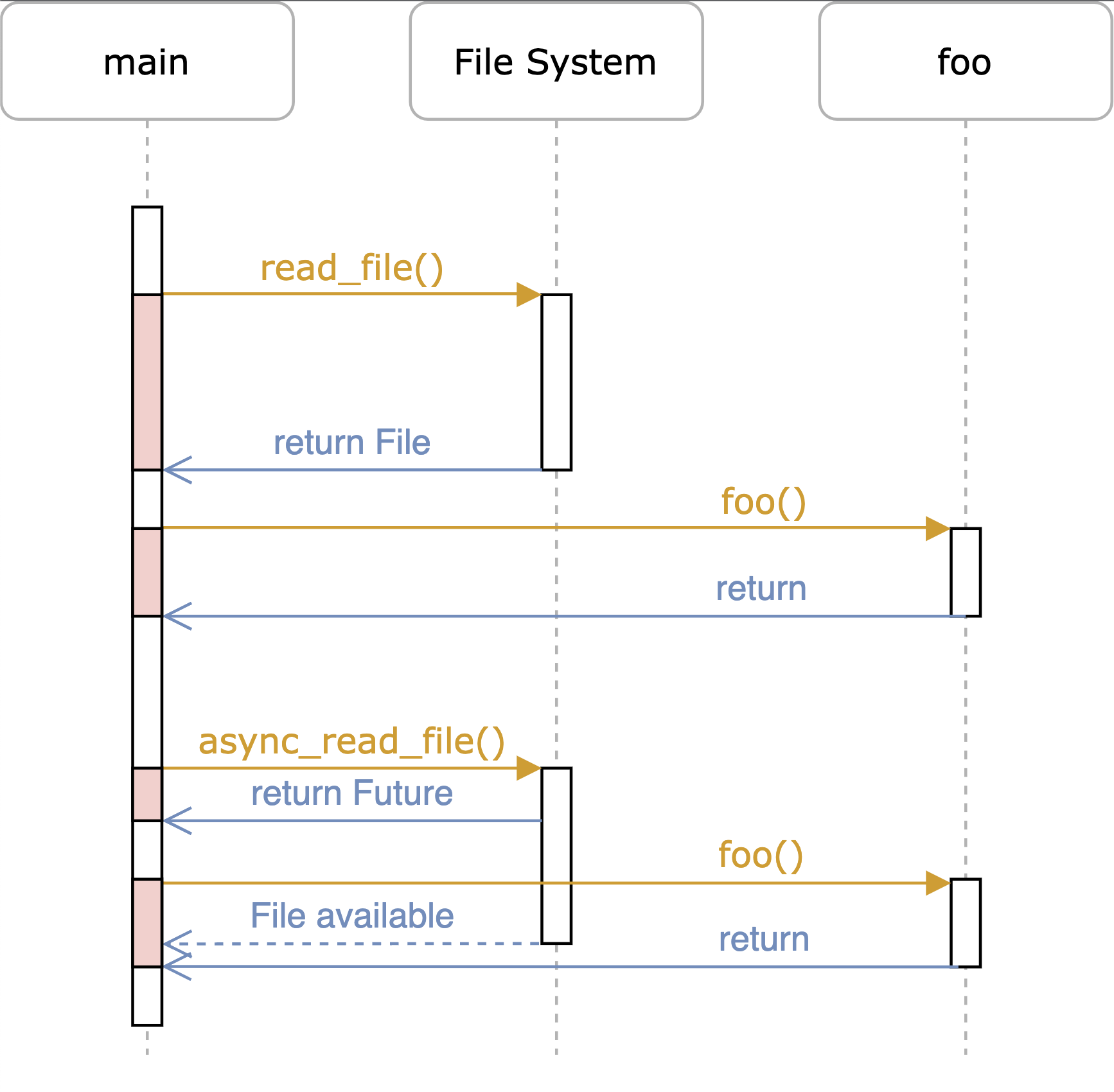
Rust语言中的协程Future
Rust 的 Future 实现了 Async Trait,它包含了三个方法:
- poll: 用于检查 Future 是否完成。
- map: 用于将 Future 的结果转换为另一个类型。
- and_then: 用于将 Future 的结果传递给下一个 Future。
使用 Future 时,可以通过链式调用的方式对多个异步任务进行串联。
Rust语言中的协程Future
use futures::future::Future; fn main() { let future1 = async { 1 + 2 }; let future2 = async { 3 + 4 }; let result = future1 .and_then(|x| future2.map(move |y| x + y)) .await; println!("Result: {}", result); }
基于有限状态机的Rust协程实现
#![allow(unused)] fn main() { async fn example(min_len: usize) -> String { let content = async_read_file("foo.txt").await; if content.len() < min_len { content + &async_read_file("bar.txt").await } else { content } } }

基于轮询的 Future的异步执行过程

协程的优点
- 协程创建成本小,降低了内存消耗
- 协程自己的调度器,减少了 CPU 上下文切换的开销,提高了 CPU 缓存命中率
- 减少同步加锁,整体上提高了性能
- 可按照同步思维写异步代码
- 用同步的逻辑,写由协程调度的回调
协程 vs 线程 vs 进程
- 切换
- 进程:页表,堆,栈,寄存器
- 线程:栈,寄存器
- 协程:寄存器,不换栈
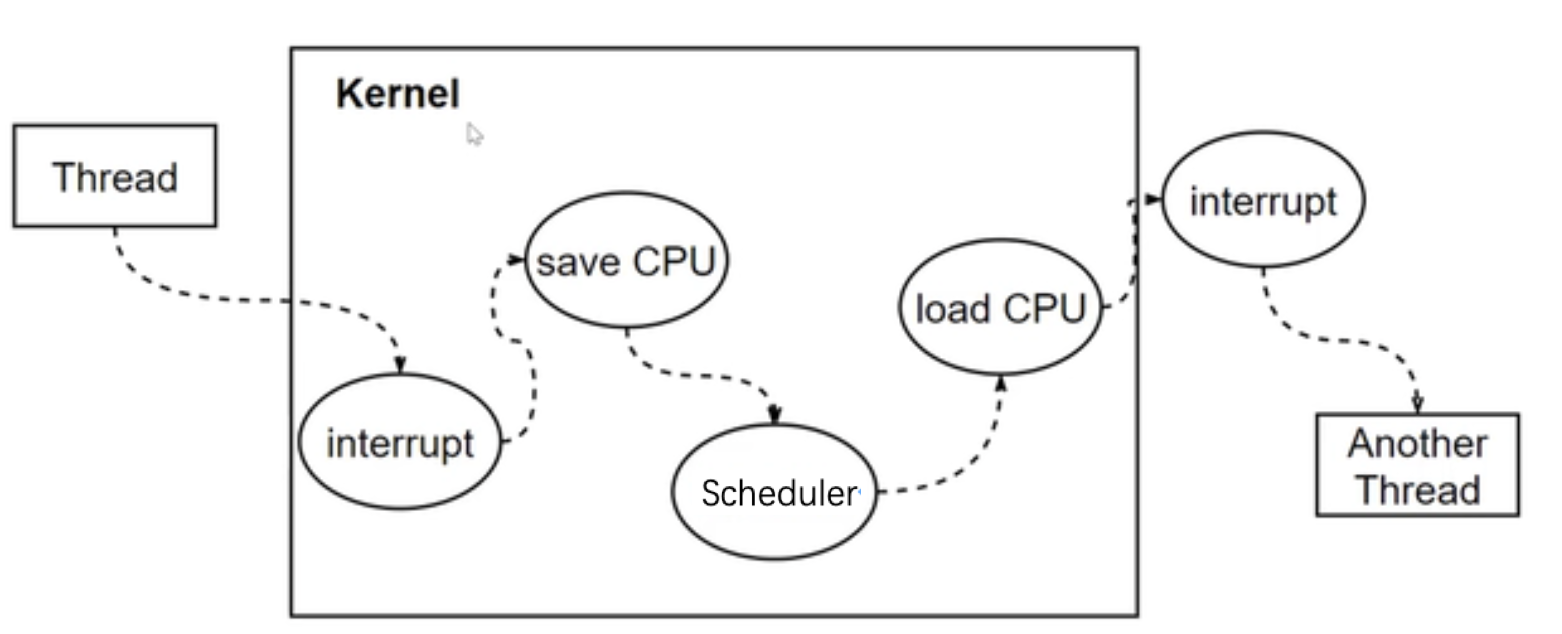

协程 vs 线程 vs 进程
协程适合IO密集型场景

提纲
- 协程的概念
- 协程的实现
3. 协程示例

支持协程的编程语言
- 无栈协程:Rust、C++20、C、Python、Java、Javascript等
- 有栈协程(即线程):Go、Java2022、Python、Lua

GO协程(goroutine)
... //https://gobyexample-cn.github.io/goroutines
func f(from string) {
for i := 0; i < 3; i++ {
fmt.Println(from, ":", i)
}
}
func main() {
f("direct")
go f("goroutine")
go func(msg string) {
fmt.Println(msg)
}("going")
time.Sleep(time.Second)
fmt.Println("done")
}
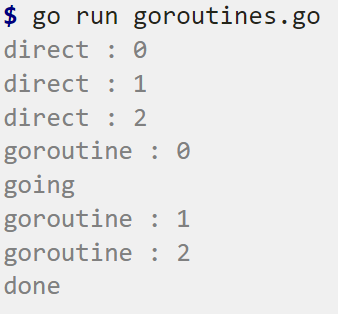
python协程
URL = 'https://httpbin.org/uuid'
async def fetch(session, url):
async with session.get(url) as response:
json_response = await response.json()
print(json_response['uuid'])
async def main():
async with aiohttp.ClientSession() as session:
tasks = [fetch(session, URL) for _ in range(100)]
await asyncio.gather(*tasks)
def func():
asyncio.run(main())
// https://github.com/nikhilkumarsingh/async-http-requests-tut/blob/master/test_asyncio.py
b6e20fef-5ad7-49d9-b8ae-84b08e0f2d35
69d42300-386e-4c49-ad77-747cae9b2316
1.5898115579998375
Rust协程
use futures::executor::block_on; async fn hello_world() { println!("hello, world!"); } fn main() { let future = hello_world(); // Nothing is printed block_on(future); // `future` is run and "hello, world!" is printed }
https://rust-lang.github.io/async-book/01_getting_started/01_chapter.html
进程/线程/协程性能比较
单进程:28秒
import requests
from timer import timer
URL = 'https://httpbin.org/uuid'
def fetch(session, url):
with session.get(url) as response:
print(response.json()['uuid'])
@timer(1, 1)
def main():
with requests.Session() as session:
for _ in range(100):
fetch(session, URL)
进程/线程/协程性能比较
多进程:7秒
from multiprocessing.pool import Pool
import requests
from timer import timer
URL = 'https://httpbin.org/uuid'
def fetch(session, url):
with session.get(url) as response:
print(response.json()['uuid'])
@timer(1, 1)
def main():
with Pool() as pool:
with requests.Session() as session:
pool.starmap(fetch, [(session, URL) for _ in range(100)])
进程/线程/协程性能比较
线程:4秒
from concurrent.futures import ThreadPoolExecutor
import requests
from timer import timer
URL = 'https://httpbin.org/uuid'
def fetch(session, url):
with session.get(url) as response:
print(response.json()['uuid'])
@timer(1, 1)
def main():
with ThreadPoolExecutor(max_workers=100) as executor:
with requests.Session() as session:
executor.map(fetch, [session] * 100, [URL] * 100)
executor.shutdown(wait=True)
进程/线程/协程性能比较
协程:2秒
...
URL = 'https://httpbin.org/uuid'
async def fetch(session, url):
async with session.get(url) as response:
json_response = await response.json()
print(json_response['uuid'])
async def main():
async with aiohttp.ClientSession() as session:
tasks = [fetch(session, URL) for _ in range(100)]
await asyncio.gather(*tasks)
@timer(1, 1)
def func():
asyncio.run(main())
Rust线程与协程的示例
Multi-threaded concurrent webserver
fn main() { let listener = TcpListener::bind("127.0.0.1:8080").unwrap(); // bind listener let pool = ThreadPool::new(100); // same number as max concurrent requests let mut count = 0; // count used to introduce delays // listen to all incoming request streams for stream in listener.incoming() { let stream = stream.unwrap(); count = count + 1; pool.execute(move || { handle_connection(stream, count); // spawning each connection in a new thread }); } }
Rust线程与协程的示例
Asynchronous concurrent webserver
#[async_std::main] async fn main() { let listener = TcpListener::bind("127.0.0.1:8080").await.unwrap(); // bind listener let mut count = 0; // count used to introduce delays loop { count = count + 1; // Listen for an incoming connection. let (stream, _) = listener.accept().await.unwrap(); // spawn a new task to handle the connection task::spawn(handle_connection(stream, count)); } }
Rust线程与协程的示例
fn main() { //Asynchronous multi-threaded concurrent webserver let listener = TcpListener::bind("127.0.0.1:8080").unwrap(); // bind listener let mut pool_builder = ThreadPoolBuilder::new(); pool_builder.pool_size(100); let pool = pool_builder.create().expect("couldn't create threadpool"); let mut count = 0; // count used to introduce delays // Listen for an incoming connection. for stream in listener.incoming() { let stream = stream.unwrap(); count = count + 1; let count_n = Box::new(count); // spawning each connection in a new thread asynchronously pool.spawn_ok(async { handle_connection(stream, count_n).await; }); } }
线程/协程性能比较

小结
- 协程的概念
- 协程的实现
- 协程示例

参考文献
- https://www.youtube.com/watch?v=R4Oz8JUuM4s
- https://github.com/nikhilkumarsingh/async-http-requests-tut
- http://www.dabeaz.com/coroutines/
- https://rust-lang.github.io/async-book/01_getting_started/01_chapter.html
- https://github.com/nikhilkumarsingh/async-http-requests-tut/blob/master/test_asyncio.py
- https://gobyexample-cn.github.io/goroutines
- https://zijiaw.github.io/posts/a7-rsfuture/